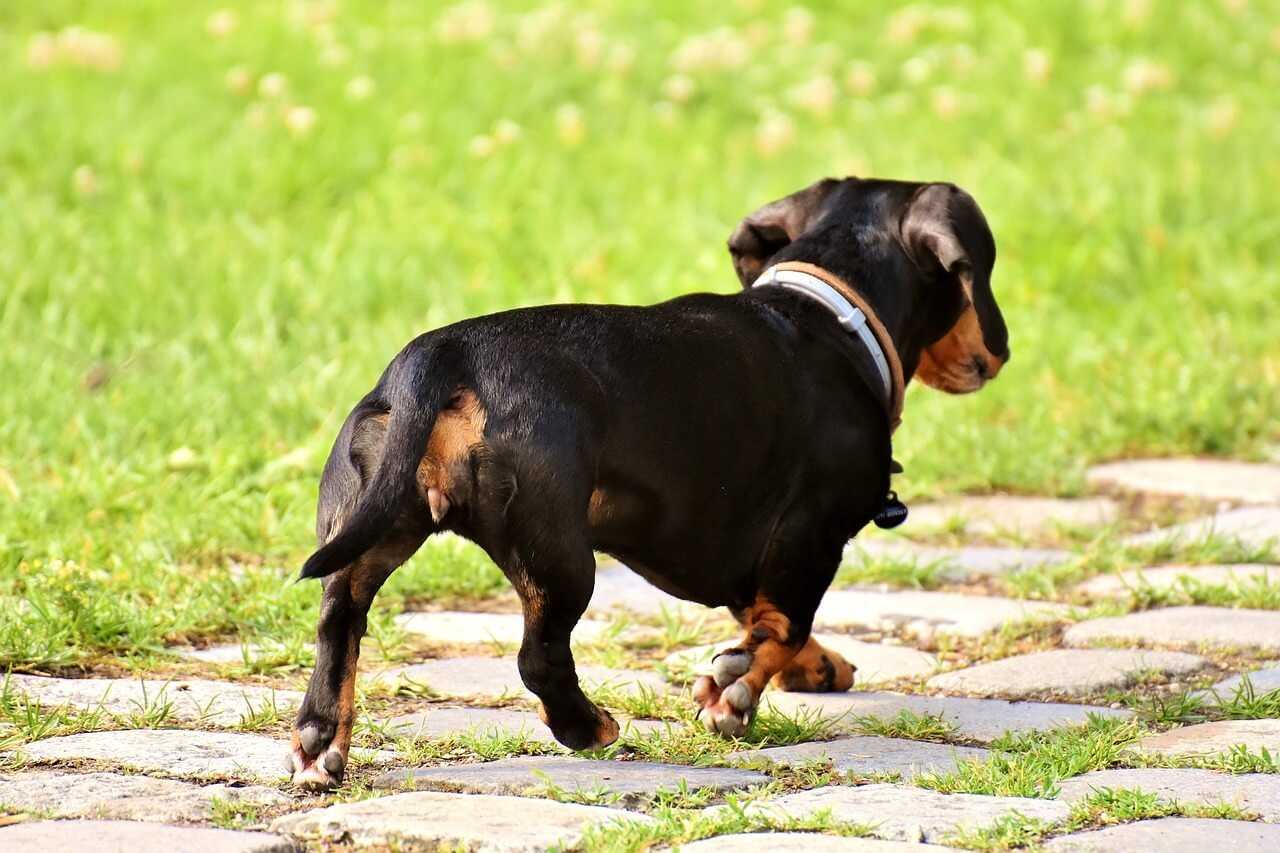Dog Painful Poop: Understanding the Causes and Solutions
If your dog is experiencing painful poop, it’s not just uncomfortable for them—it can also be a sign of an underlying health issue that needs attention. While it’s not uncommon for dogs to have occasional digestive upsets, persistent pain during bowel movements should never be ignored. From dietary indiscretions to more serious medical conditions, there are several potential causes for this discomfort. In this guide, we’ll explore the reasons behind painful pooping in dogs, how to identify the signs, and what you can do to help your furry friend feel better. With the right knowledge and care, you can ensure your dog stays happy, healthy, and pain-free.
Common Causes of Painful Poop in Dogs
When your dog is struggling during bowel movements, understanding the root cause is the first step toward finding a solution. Here are some common reasons why your dog might be experiencing painful poop:
Constipation : Hard, dry stools can make it difficult and painful for your dog to poop. Dehydration or lack of fiber in their diet may contribute to this issue.
Diarrhea : Loose stools caused by infections, dietary changes, or stress can irritate the rectum, leading to discomfort.
Anal Gland Issues : Impacted or infected anal glands can cause significant pain during defecation and require veterinary attention.
Foreign Objects : Swallowed objects like toys, bones, or fabric can cause blockages in the intestines, leading to painful bowel movements.
Parasites : Intestinal worms or other parasites can disrupt digestion and cause inflammation, making pooping painful.
Identifying the cause is essential for determining the appropriate treatment and ensuring your dog’s comfort.
Signs Your Dog Is Experiencing Painful Poop
Dogs can’t tell us when they’re in pain, so it’s important to recognize the behavioral and physical signs that indicate discomfort during bowel movements.
Straining : Your dog may squat repeatedly without producing much stool, indicating difficulty passing waste.
Whining or Crying : Vocalizations during or after pooping suggest they’re experiencing pain.
Blood in Stool : The presence of bright red or dark blood in their feces can signal irritation or injury.
Licking or Chewing Rear End : Excessive licking of the anal area may indicate discomfort or irritation.
Changes in Behavior : A normally energetic dog becoming lethargic or withdrawn could be a sign of distress.
By paying close attention to these signs, you can intervene early and prevent further complications.
Check this guide 👉Composting Dog Poop: Best 7 Expert Tips!
Check this guide 👉What to Do with Dog Poop: Best 7 Expert Tips!
Check this guide 👉Dog Poop Starts Solid Then Soft: Best 7 Expert Tips!

Causes of Painful Poop in Dogs | Possible Solutions |
|---|---|
Constipation | Increase hydration and fiber intake; consult vet if persistent |
Diarrhea | Identify dietary triggers; provide bland diet temporarily |
Anal Gland Problems | Schedule professional gland expression by a vet |
Foreign Object Blockage | Seek immediate veterinary care for diagnosis and removal |
Parasitic Infections | Administer deworming medication as prescribed by a vet |
How to Help Your Dog Feel Better
Once you’ve identified the cause of your dog’s painful poop, there are steps you can take to alleviate their discomfort and promote healing.
Hydration : Ensure your dog has access to fresh water at all times, especially if constipation or diarrhea is an issue.
Dietary Adjustments : Switch to a high-fiber diet for constipation or a bland diet (e.g., boiled chicken and rice) for diarrhea.
Warm Compress : Apply a warm compress to your dog’s abdomen to soothe cramping muscles and encourage bowel movement.
Regular Exercise : Light walks can stimulate digestion and help relieve constipation.
Veterinary Care : If symptoms persist or worsen, schedule an appointment with your vet for a thorough examination.
Taking proactive steps can make a significant difference in your dog’s comfort and overall well-being.
Preventing Painful Poop in the Future
Prevention is always better than cure when it comes to your dog’s digestive health. Here are some tips to reduce the likelihood of painful poop episodes:
Balanced Diet : Feed your dog a nutritionally complete diet tailored to their age, size, and activity level.
Avoid Table Scraps : Human food can upset your dog’s stomach, so stick to dog-safe treats and meals.
Regular Vet Checkups : Routine examinations can help catch underlying health issues before they escalate.
Monitor Anal Glands : Keep an eye on your dog’s anal gland health and address any issues promptly.
Parasite Prevention : Use monthly preventatives to protect your dog from worms and other parasites.
By implementing these preventive measures, you can minimize the risk of painful poop and keep your dog healthy.
Incorporating Dog-Safe Foods to Ease Painful Poop
Certain dog-safe foods can support your dog’s digestive health and alleviate discomfort during bowel movements. Adding these ingredients to their diet may help regulate their system naturally.
Pumpkin : Rich in fiber, canned pumpkin (unsweetened) can soften stools for constipated dogs or firm them up for dogs with diarrhea.
Plain Yogurt : Contains probiotics that promote healthy gut bacteria and improve digestion.
Bone Broth : Hydrating and nutrient-rich, bone broth can soothe the digestive tract and encourage hydration.
Boiled Chicken and Rice : A bland, easily digestible meal that can settle an upset stomach.
Sweet Potatoes : High in fiber and vitamins, sweet potatoes can regulate bowel movements when served cooked and plain.
Including these foods in moderation can provide relief and support your dog’s digestive system during uncomfortable episodes.
When Painful Poop Indicates a Bigger Problem
While occasional digestive discomfort is common, some symptoms may point to a more serious underlying condition requiring immediate attention. Be vigilant for these red flags:
Persistent Vomiting : Frequent vomiting alongside painful poop could indicate gastrointestinal obstruction or infection.
Weight Loss : Unexplained weight loss combined with painful bowel movements may signal malabsorption or chronic illness.
Frequent Accidents : Inability to control bowel movements can be a sign of nerve damage or severe intestinal issues.
Pale Gums : Pale gums may indicate internal bleeding or anemia, which can result from parasites or other conditions.
Lethargy and Weakness : If your dog seems unusually tired or unresponsive, it could mean their body is fighting a serious illness.
If you notice any of these signs, consult your veterinarian immediately to rule out or address critical health concerns.
Soothing Your Dog When They’re in Discomfort
Seeing your dog in pain can be distressing, but there are ways to comfort them and make the experience less stressful for both of you. Here are some tips to help your dog feel supported:
Stay Calm : Dogs pick up on their owner’s emotions, so remaining calm can help reassure them during difficult times.
Provide a Quiet Space : Allow your dog to rest in a quiet, comfortable area away from noise and distractions.
Gentle Massage : Lightly massaging your dog’s abdomen can help relieve tension and encourage bowel movement.
Offer Distractions : Engage your dog with gentle play or toys to take their mind off their discomfort.
Reassurance Through Touch : Soft petting or cuddling can provide emotional comfort and strengthen your bond.
By offering physical and emotional support, you can help your dog feel safer and more at ease during painful episodes.
Frequently Asked Questions About Dog Painful Poop
How can I tell if my dog is constipated?
Signs include straining to poop, infrequent bowel movements, and hard, dry stools.
What should I do if my dog has diarrhea?
Offer a bland diet, ensure proper hydration, and consult your vet if it persists for more than 24-48 hours.
Can anal gland issues cause painful poop?
Yes, impacted or infected anal glands can lead to significant discomfort during defecation.
When should I take my dog to the vet for painful poop?
Seek veterinary care if your dog shows signs of severe pain, blood in stool, or prolonged symptoms.
Are certain breeds more prone to painful poop?
Some breeds, like Bulldogs or Pugs, may experience digestive issues more frequently due to their anatomy or genetic predispositions.
Prioritize Your Dog’s Digestive Health for a Happy Life
Painful poop is a common but manageable issue that many dog owners face. By understanding the potential causes, recognizing the warning signs, and taking prompt action, you can ensure your dog feels comfortable and healthy. Whether it’s adjusting their diet, addressing anal gland problems, or seeking veterinary care, every step you take contributes to their overall well-being. Remember, prevention is key—maintaining a balanced diet, regular checkups, and parasite control can go a long way in keeping your dog’s digestive system in top shape. With your care and attention, your furry companion will enjoy many happy, pain-free years by your side.
Why Is My Cats Second Eyelid Showing? Best 7 Expert Tips! Understand causes, health signs, and how to respond when your cat’s third eyelid becomes visible.
How Do I Know If My Cat Died Peacefully? Best 7 Expert Tips! Discover the quiet signs of a peaceful feline passing and find comfort in their final moments.
Cat Allergy Eyes: Best 7 Expert Tips! Discover why your eyes react to cats and learn proven strategies for relief—without giving up your feline friend.
Why Do Abyssinian Cat Colors Matter? Best 7 Expert Tips! Discover the genetics, rare hues, and care secrets behind Abyssinian coat colors for a healthier, happier cat.





